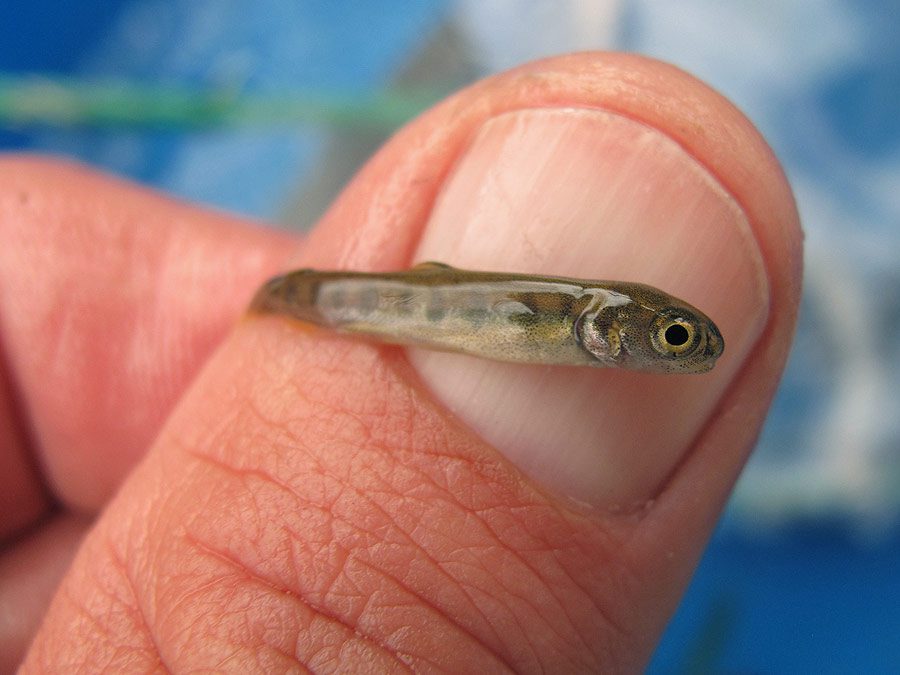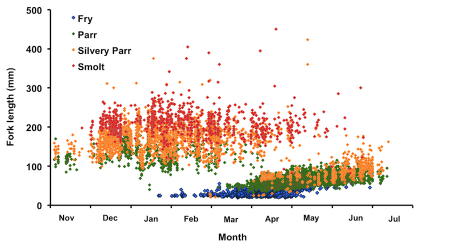Monday March 28, 2011

It is difficult to imagine that steelhead (Oncorhynchus mykiss) begin life in such a delicate state. The early life-stage of most fish species, like many other animals, suffers high mortality as they are weak swimmers, and vulnerable to predators, entrainment and many other hazards. Steelhead fry survival can vary greatly and is impacted by dissolved oxygen and water temperature (NMFS 2001).

Once fry have emerged from the gravel and their yolk sac is fully absorbed, juvenile trout begin to grow at a rate dependent on factors such as water temperature and food availability. In our experience a rainbow trout fry this small (25mm, 0.1g) has only emerged within the past week. Growth rates are highly variable between watersheds and back-calculation techniques are often used to for determining the age structure of the juvenile population (Mitchell 2010). This graph demonstrates the size of each fish caught in the trap from 2002-2010, and the data indicate that recently emerged fry (~ 20mm) are generally collected in March and April. The average size of the fry and parr caught in the trap increases steadily throughout the spring sampling period as the trout grow. Many O. mykiss will rear in the tributaries and migrate out the following winter as smolts greater than 100mm.
Photo source: FISHBIO
